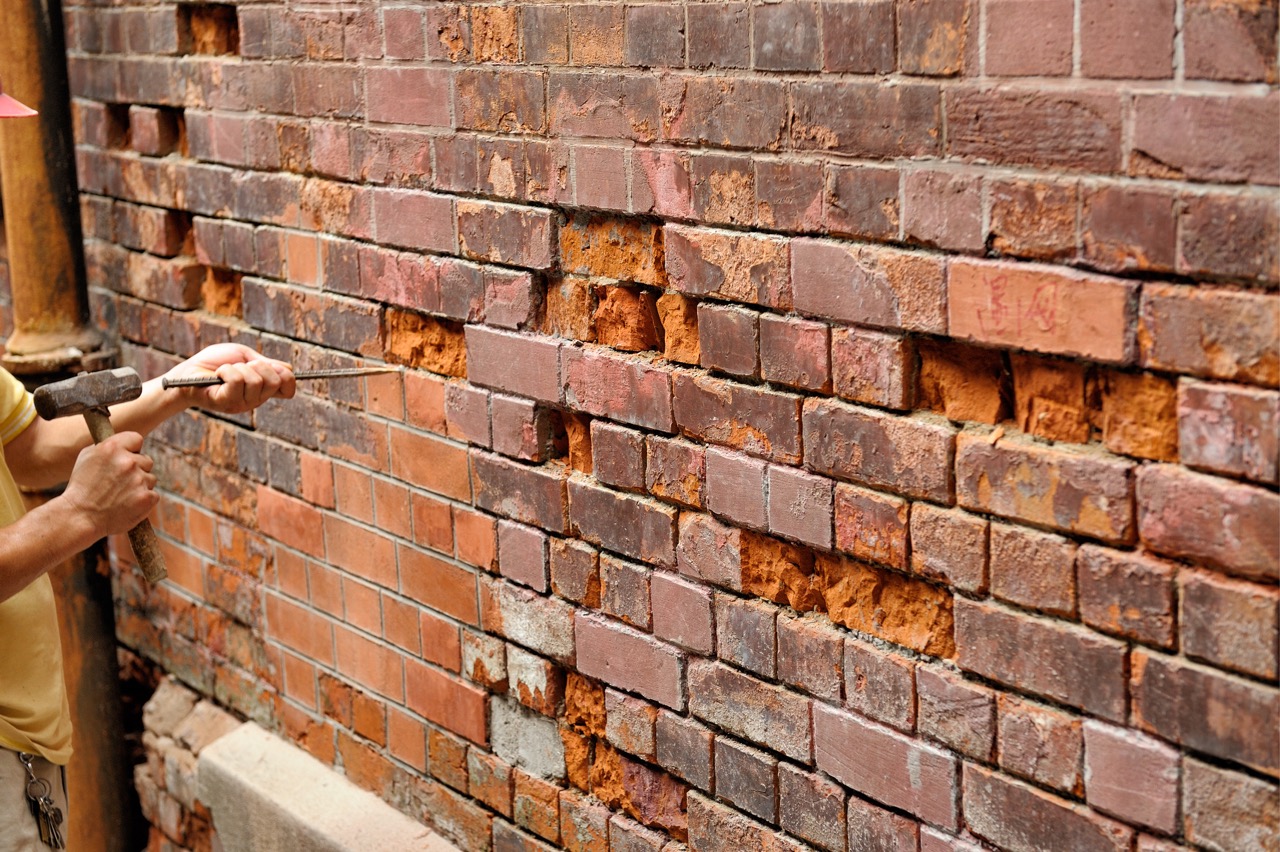High-grade Roofing Contractor Services for Your Home
High-grade Roofing Contractor Services for Your Home
Blog Article
Unlocking the Tricks of Lasting Masonry Building And Construction Practices for Eco-Friendly Buildings
Among the myriad techniques to green structure, lasting stonework building and construction stands out as a time-tested and durable method that holds a riches of untapped possibility. From the option of materials to innovative construction strategies, the secrets to attaining sustainability within masonry construction are complex and appealing.
Benefits of Lasting Masonry Building
Accepting sustainable masonry building practices not only minimizes ecological impact but additionally provides long-lasting financial advantages to contractors and communities. By using materials like recycled blocks, blocks, and rocks, building contractors can dramatically decrease the carbon footprint of their projects while promoting source effectiveness. Furthermore, sustainable masonry building and construction techniques, such as proper insulation and thermal mass buildings, can improve energy performance within buildings, leading to decreased operational prices in time.
Moreover, the longevity and resilience of masonry structures contribute to long-term financial benefits. Buildings built making use of lasting masonry practices typically call for much less repair and maintenance, equating to cost savings for building contractors and property owners. The longevity of masonry materials also ensures that structures continue to be steady and safe and secure, reducing the demand for regular restorations or substitutes.
Eco-Friendly Masonry Materials
Utilizing eco-friendly stonework products is a crucial action towards boosting the sustainability of building and construction practices and lessening ecological impact while maximizing lasting economic benefits. Sustainable masonry products are sourced, generated, and utilized in a way that decreases general environmental influence. Sustainable concrete blocks incorporate recycled aggregates and might feature enhanced insulation properties, contributing to energy effectiveness in buildings.
Furthermore, all-natural materials like adobe, rammed earth, and straw bundles supply excellent thermal mass buildings, reducing the demand for heating and cooling down power. These materials are commonly in your area available, advertising local economic climates and lowering transportation-related carbon emissions. By choosing environment-friendly stonework materials, construction projects can significantly decrease their environmental impact and add to the development of much healthier, a lot more sustainable constructed environments.
Energy-Efficient Masonry Methods
Power efficiency plays a crucial role in boosting the sustainability of stonework construction practices. One vital energy-efficient stonework strategy is the use of thermal mass, which includes including dense materials like concrete or block right into the structure's framework to soak up and store heat.

Innovations in Lasting Stonework
Current developments in lasting masonry methods have brought about ingenious methods that are reshaping the construction market. One such technology is the development of self-healing concrete, which uses microorganisms embedded within the concrete to heal fractures autonomously. This innovation not only minimizes upkeep expenses yet likewise boosts the toughness of masonry frameworks, adding to their sustainability.
An additional notable technology is making use of recycled aggregates in stonework construction - masonry contractor. By integrating products such as crushed ceramic waste or recycled glass right into concrete blends, home builders can decrease the environmental effect of construction projects while preserving structural stability. This technique not only draws away waste from garbage dumps yet additionally conserves natural resources, making it an essential advancement in lasting masonry building
Furthermore, the integration of digital style tools, such as Building Info Modeling (BIM), is transforming the way stonework frameworks are prepared and constructed. BIM permits for more accurate estimations, reduced material wastage, and basics boosted energy efficiency, ultimately causing more sustainable structure methods. These developments collectively symbolize an encouraging future for lasting stonework building michael's auto sales and construction in the era of environmentally friendly structures.
Future Trends in Masonry Sustainability
With the innovative strides made in lasting stonework practices, the future trends in stonework sustainability are positioned to additional change the construction industry. One of the essential fads forming the future of stonework sustainability is the boosted integration of modern technology. Advancements such as Building Information Modeling (BIM) and digital reality simulations are being utilized to enhance stonework construction processes, bring about reduced material waste and improved energy performance in structures.
Additionally, the development of novel lasting materials is readied to play a substantial function in enhancing the eco-friendliness of masonry building and construction. masonry contractor. Developments like self-healing concrete, recycled accumulations, and bio-based binders are obtaining traction for their ability to reduce ecological effect while preserving architectural integrity

Conclusion
In conclusion, sustainable masonry construction techniques provide numerous advantages for environmentally friendly structures. By using green materials and energy-efficient strategies, masonry can add to a more lasting built setting. Advancements Website in lasting masonry are continually being developed to better enhance the ecological efficiency of structures. Looking towards the future, the fad of masonry sustainability is expected to expand, causing even more environmentally pleasant and energy-efficient construction methods in the years to find.
Report this page